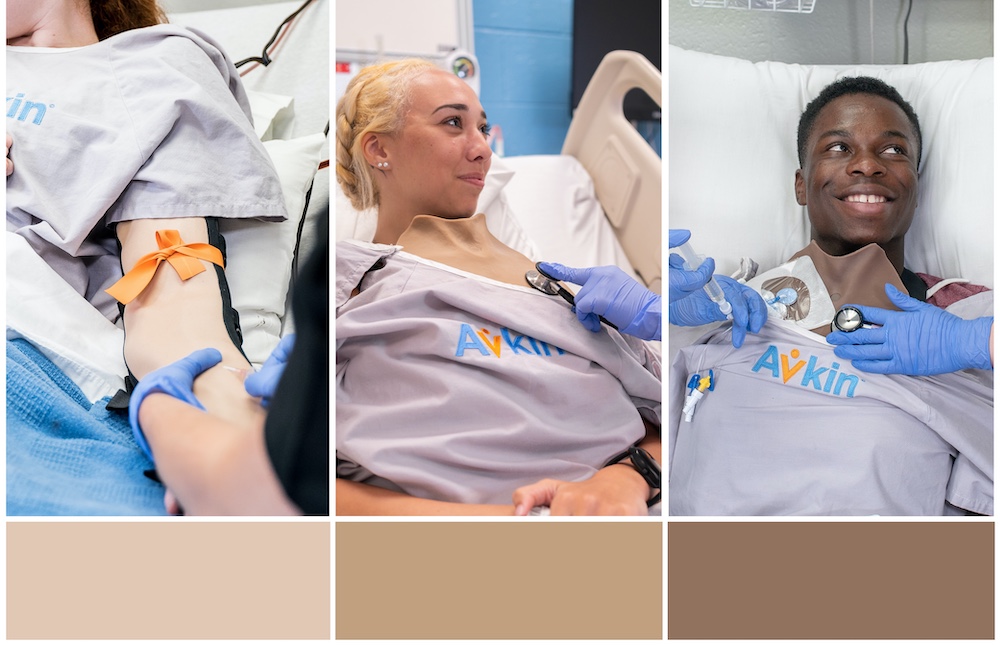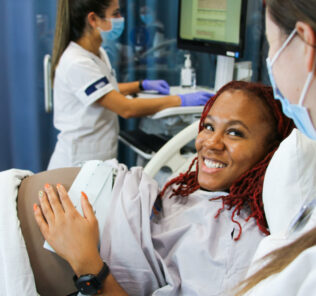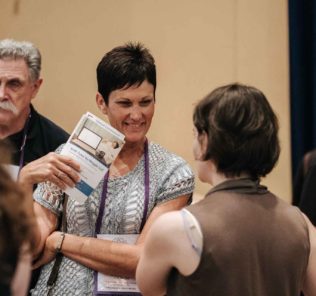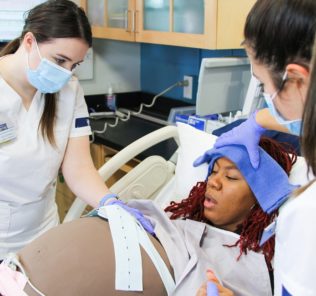Why Simulator Cultural Competency Matters: Promoting Diversity in Clinical Education with Avkin Wearable Simulators
Cultural competency, diversity, and inclusion are all topics that have taken center stage in healthcare education recently. However, even as long as 20 years ago, the Institute of Medicine (IOM) exposed health disparities experienced by marginalized populations and identified them as an area for needed improvement. Unfortunately, there was minimal direction in terms of best practices and guidance to address these issues. As a result, predominantly non-marginalized educators were left to develop and deliver their own diversity-centric curriculum. This HealthySimulation.com article takes a look at the research supporting the importance of diversity research in clinical education and shares how Avkin has developed the company’s wearable simulator line accordingly.
This experience often feels flat of achieving meaningful and transformational change among their learners. Effective cultural competence education will expose a learner’s cognitive bias before becoming the next front-line provider, closing the gap between health disparities among the marginalized.
For this reason, Avkin doubled its efforts to release its diversity product packages, which feature their wearable simulators in the three diverse skin tones; dark, mid, and light tones. Avkin created these offerings to help simulation teams responsibly and accurately take abstract concepts such as health disparities or inequity to the practical application by enabling a vast array of diverse patient scenarios.
Sponsored Content:
The most significant aspect of wearable simulators is that now, during simulation learning, simulated participants from diverse backgrounds can accurately represent their physical attributes, emotional responses, and unique perspectives throughout the interaction and debriefing. Furthermore, Avkin’s diversity package was created to help learners recognize how patients’ past experiences impact outcomes and adherence.
In the 2019 article, Effect of the diverse standardized patient simulation (DSPS) cultural competence education strategy on nursing students’ transcultural self-efficacy perceptions, Ozkara San highlights the importance of integrating diversity education with standardized patients to improve learners’ knowledge, skills, and attitudes regarding culturally competent care. The two DSPSs were guided by Jeffreys’ Cultural Competence and Confidence model (2015), Jeffries Simulation Theory (2015), and best practice standards.
The qualitative comments from the learners highlighted the value of including simulated participants (SPs) in the learning experience and the insight they were able to glean from the feedback portion of the debriefing that they can apply to future care scenarios. The University of Delaware and several other institutions have developed a creative solution for recruiting a diverse pool of SPs for their DSPS (Cowperthwait, Saylor, Schell, 2014). By creating a for-credit college course, they can recruit SPs from their diverse student body and formalize the educational process so they can portray the patient and family member, providing simulation labs with trained and diverse SPs.
“Teaching diversity education is especially challenging when trying to integrate this vital topic into the curriculum of an already-packed health professions education,” said Avkin CEO and simulationist Amy Cowperthwait. “Simulation education, done correctly, provides a safe environment for transitioning novice learners from self-awareness to confidently and competently providing patient-centered care to underserved and marginalized populations.“
Sponsored Content:
While cultural competencies are a crucial aspect of patient care, they can be easily overlooked in practice, compromising patient safety. A vital example of this is the disparity in pressure injuries among various skin tones. According to Oozageer Gunowa, N., Brooke, J., Hutchinson, M., & Jackson, D. (2020), lack of education and available teaching tools lead to more severe pressure injuries among those with darker skin tones. Therefore, educators must actively seek better methods to prevent color-blindness in their learners.
They can accomplish this by teaching the assessment and care of patients across the spectrum of racial and cultural differences among all patients with intentionality. Avkin’s diverse wound care package exemplifies what Avkin has done to fill the educational gap for the underserved. They uniquely created this package to foster the development and awareness of all learners who will be providing front-line care to diverse populations.
Many nursing educators ask how diversity, equity, and inclusion will be threaded into the Next Generation NCLEX due to be released in 2023. The National Council on State Boards of Nursing (NCSBN) has mandated the new NCLEX exam focus on detecting cues from the patient, creating and testing hypotheses, and reassessing the patient to determine if the interventions were effective.
The NCSBN Clinical Judgment Measurement Model (2019) is meant to support the development of critical thinking. From the very outset of the model, learners are expected to assess their patient’s needs, detect patient cues and act on those cues. If they cannot assess, understand, or empathize with their patients from diverse backgrounds, they will never be successful at providing effective treatment.
One such way to prepare learners of all levels is to include simulations with patients from varying backgrounds and ethnicities. The various skin tones offered for Avkin’s wearable simulators allow SPs to accurately portray a character with a similar heritage without breaking the fidelity of the simulation. Avkin’s devices are offered in three distinct skin tones, with many programs purchasing a diversity package to ensure they can practice cultural competencies throughout the curriculum.
You can learn more about Avkin’s product offerings, available in light, medium, and dark skin tones, or explore the SimScription with a host of various unique patient presentations and many ready-to-use simulations that focus on the integration of SPs into the learning process, including simulations designed explicitly for increasing cultural competencies.
More About Avkin
Avkin manufactures wearable devices for use across healthcare simulation as a consultant for standardized patient programs. Founded in 2015 by Amy Cowperthwait, a nurse educator herself, Avkin provides a clinical simulation solution that combines the best of high-fidelity manikins and the realism of standardized patients for the most authentic medical simulation experience possible.
Headquartered in Wilmington, Delaware, Avkin believes that the key to successful patient-centered care is practitioner training through realistic simulations and that human interaction is irreplaceable in healthcare education. Avkin’s sensor-enabled, wearable technology uses haptic feedback to enable educators to provide the highest standard of healthcare simulation training. This standard teaches both the art (soft skills) and science (hard skills) required from practitioners, including physicians, nurses, and first responders.
“[The future of nursing simulation is] a mix of AR and simulated participants for training. There is no denying that VR/AR technology is just getting better. However, the key to better preparing our learners for the clinic is acknowledging that they will still not replace human interaction. I think the future of simulation is using VR and AR technology as an interactive way to complete repetitive tasks while using simulated participants to learn the human element that can so easily be overlooked by cool tech,” explained Amy Bucha, chief scientific officer at Avkin.
Rooted in the Latin words “akin” and “vera,” Avkin combines the two. With “akin” meaning “of similar character” and “vera” meaning “truth,” Avkin’s goal has always been to create the best quality products that allow for education to be “of similar character” and “true” to what learners will experience in real life.
Learn More About Avkin
- Cowperthwait, A., Saylor, J., & Schell, K. (2014). Healthcare theatre: a unique simulation partnership. Clinical Simulation in Nursing, 10(1), e41-e46.
- Jeffries, P. R., Rodgers, B., & Adamson, K. (2015). NLN Jeffries simulation theory: Brief narrative description. Nursing education perspectives, 36(5), 292-293.
- Jeffreys, M. R. (2015). Teaching cultural competence in nursing and health care: Inquiry, action, and innovation. Springer Publishing Company.
- Oozageer Gunowa, N., Brooke, J., Hutchinson, M., & Jackson, D. (2020). Embedding skin tone diversity into undergraduate nurse education: Through the lens of pressure injury. Journal of Clinical Nursing, 29(21-22), 4358-4367.
- Ozkara San, E. (2019). Effect of the diverse standardized patient simulation (DSPS) cultural competence education strategy on nursing students’ transcultural self-efficacy perceptions. Journal of Transcultural Nursing, 30(3), 291-302.
- National Council on State Boards of Nursing.(2019). Clinical Judgment Measurement Model. Retrieved from https://www.ncsbn.org/14798.htm.
Lance Baily, BA, EMT-B, is the Founder / CEO of HealthySimulation.com, which he started in 2010 while serving as the Director of the Nevada System of Higher Education’s Clinical Simulation Center of Las Vegas. Lance also founded SimGHOSTS.org, the world’s only non-profit organization dedicated to supporting professionals operating healthcare simulation technologies. His co-edited Book: “Comprehensive Healthcare Simulation: Operations, Technology, and Innovative Practice” is cited as a key source for professional certification in the industry. Lance’s background also includes serving as a Simulation Technology Specialist for the LA Community College District, EMS fire fighting, Hollywood movie production, rescue diving, and global travel. He and his wife live with their two brilliant daughters and one crazy dachshund in Las Vegas, Nevada.
Sponsored Content:


















